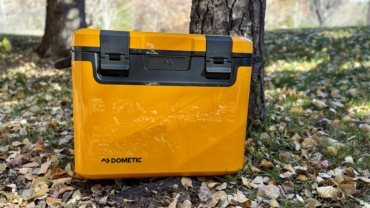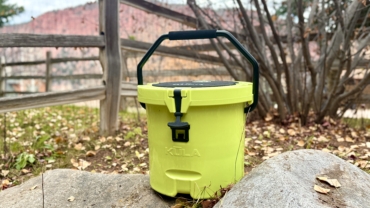[leadin]Andrew Skurka, age 29, is something of a god in the world of ultralight backpacking and long-distance solo treks.[/leadin]

His latest feat — a 4,680-mile trip that entailed traveling by foot, ski and pack-raft for 176 days straight — was called the “Alaska-Yukon Expedition,” and it began and ended near the Arctic Circle in Alaska. For almost six months, Skurka traveled alone in a humongous geographical circle in a land so wild that the route crossed only eight major roads. The trip was supported by National Geographic and coverage of it appears in the March issue of the magazine, on newsstands now. Gear Junkie caught up with Skurka for a dozen quick questions on dirty socks, food drops, and the best and worst equipment used on his latest long trek into the wild. —Stephen Regenold
1. How often do you change socks?
In wet environments like Alaska, I change my socks once at the end of the day. I swap my hiking socks, which are usually damp or wet, for my dry sleeping socks.
2. Where were the food drops throughout the Alaska-Yukon Expedition?
I shipped most of my supplies to post offices along my route. But I also had two packages dropped off by air and another by dogsled (in Denali National Park) where otherwise the logistics were too challenging.
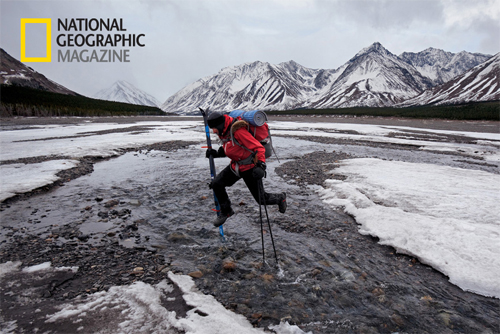
3. Let’s talk footwear. How did you choose the La Sportiva Fireblade shoes?
It fits my foot really well — secure heel cup, form-fitting mid-section, and just enough room in the toebox. It’s also lightweight, low to the ground, and very durable for a trail-running shoe.
4. How many pair did you go through?
Only six pairs, though there were only 2,100 miles of walking. Otherwise I was wearing my leather three-pin Telemark boots (for 1,300 miles of skiing) or I was in my pack-raft in water.
5. What gear broke or needed to be replaced on the expedition?
There were no catastrophic gear failures. This didn’t surprise me at all. But many people struggle to believe that a two-pound backpack or a 13-ounce, fully-enclosed tarp can be durable enough for a mega trip like this. It can be. Obviously, I needed to swap out gear due to changes in the seasons (e.g., my sleeping bag and insulated clothing) and to wearing stuff out (e.g., socks, base-layer shirts, even a camera).
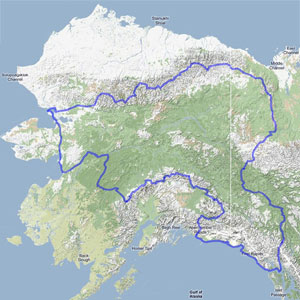
6. How heavy was your pack without food and water and fuel (during the non-winter trek portion)?
During the summer my pack weighed 18.6 pounds without food and water, and I had 22.9 pounds of gear in total (this was including my clothing, footwear, and trekking poles). This weight includes my 5-pound pack-raft, 2-pound paddle, 1-pound satellite phone, plus standard three-season gear (clothing, shelter, kitchen, etc.).
7. Your No. 1 favorite piece of gear on the trip, or most crucial was. . .
In Alaska, my inflatable Alpacka pack-raft is critical for three-season conditions. It allows me to get across rivers, fjords, and bays that are in my way, and I can float rivers that go in my desired direction of travel rather than bushwhacking for days along the river banks.
8. Your No. 1 favorite food on the trip overall (and least favorite food)?
Anything with chocolate in it. Least? Anything lacking chocolate.
9. Least favorite gear piece.
Waterproof/breathable fabrics are not very waterproof, at least in real-world conditions. And they’re not very breathable, either. Unfortunately, the alternatives aren’t any better: Waterproof/non-breathable fabrics cause excessive sweating; a wind-shell with more clothing is not as warm; and ponchos and umbrellas are not good in wind or when bushwhacking.
10. What surprises you about gear in the outdoors world?
Lightweight gear has come a long way in the last 10 years. I was able to get every piece of gear I wanted from a manufacturer, save for my homemade stove. The largest retailers and manufacturers are doing their customers a disservice by not embracing this equipment revolution. It’d be equivalent to a bike company like Trek or Specialized ignoring carbon-fiber bike frames and suspension forks, or like Volkl and K2 insisting that long, skinny skis with no sidecut are still best for downhill skiing. Wake up!
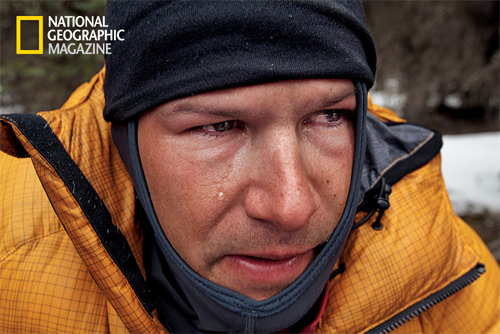
11. Why did you use a trash compactor bag as a pack liner?
Most importantly, it’s effective in keeping my gear dry. It is also cheap and ultralight, and it lasts longer than a silnylon pack liner.
12. Any other unconventional gear used on the trip?
I made my three-season stove out of a Fancy Feast cat food can. And by wearing my clothing to bed I was able to use a much lighter sleeping bag — I used a 0-degree bag in temperatures down to -24F, and a 30-degree sleeping quilt down to 15F.
—Stephen Regenold is founder and editor of www.gearjunkie.com. Photos by Michael Christopher Brown / © National Geographic. See more photos from Skurka’s expedition at https://ngm.nationalgeographic.com/alaska-trek.




